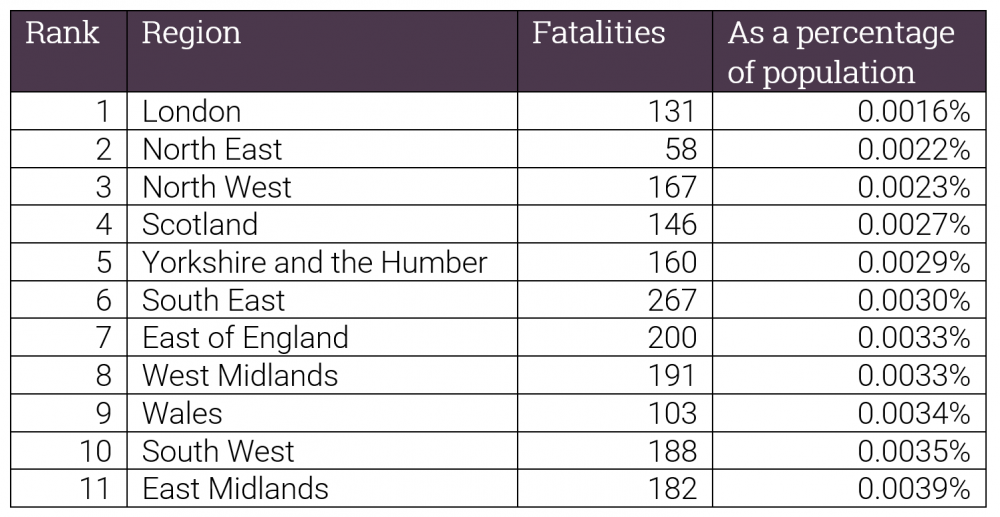What we can learn from Scotland’s road safety success
Fatalities in Scotland reduced by 24 percent in 2017, according to last month’s Reported Road Casualties in Great Britain. This was the biggest improvement in Great Britain. Fatalities were reduced to 146, taking Scotland ahead of its 2020 reduction target to reduce fatalities by 40 percent. How is Scotland achieving these gains when the rest of Great Britain is achieving little or no improvement in road safety?
Taking responsibility
Some aspects of transport (including the road network) are devolved powers, so the Scottish Parliament has greater control over these areas. Could this be part of the reason behind Scotland’s performance? With greater responsibility over a smaller area it stands to reason that those making decisions at the very top have a better understanding of local issues and where funding is needed most. They are also more able to commit to long-term transport planning.
Going back to the latest reported road casualties and looking at the fatalities by region sheds further light on this. Looking purely at fatalities, the South East is the worst performing region and the North East is the best.

Adjusting for population, however tells another story.

If you rank the regions by fatalities as a proportion of the total population, London suffered the fewest fatalities, followed by the North East, North West and Scotland, with Yorkshire and the Humber fifth. London obviously has a dedicated local government body in Transport for London (TfL) whilst Scotland, as discussed above, has devolved responsibility.
The fact that the North performs so well is interesting because although the legislation for Transport for the North’s function didn’t come into force until this year, the initial Transport for the North partnership was formed in 2014, starting the close collaboration across the North and joint infrastructure planning.
Sharing responsibility
Sub-national Transport Bodies (STBs) like Transport for the North, with similar power to TfL and Scotland’s transport planning, could make a significant impact on road safety across Great Britain. After all, the local authority road safety managers know where the issues lie and what remedies will likely be most effective but obtaining funding for solutions can be complex and has not facilitated long-term planning or schemes covering whole routes. It is hoped that STBs will combine an understanding of where the issues lie with an appreciation of the wider area, and greater responsibility to implement the right solutions where they are needed most.
There are now four STBs: Transport for the North, Transport for the South East, Midlands Connect and England’s Economic Heartland. There is also talk of STBs for the South West and West Anglia. Hopefully these new and emerging bodies will achieve similar success.
Acting responsibly
Clearview Intelligence works closely with road operators in Scotland from their office in Glasgow and have seen how empowering road managers with funding and decision-making control allows road safety professionals to effectively manage their network and bring down accident rates.
Having worked with Transport Scotland and its supply chain Clearview has seen how road safety solutions designed to target the specific issues on an area of the network can significantly reduce accidents and change driver behaviour.
Over the years, Clearview has become trusted advisors to many operators in Scotland, which has allowed them to deliver new and innovative schemes, such as:
- Dynamic Queue Warning on the A77 Bellfield Interchange
- Enhanced Delineation on the A1
- Vehicle Activated Dynamic Speed Warning on the A75
Hopefully, the growth of STBs will facilitate similar success across Great Britain.




















